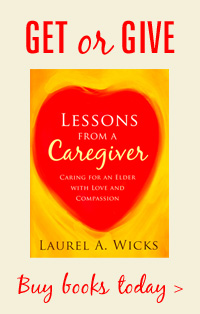Be Ready (72 Hour Kit)
Teton Home and Living | Spring 2011
View article at LifeintheTetons.com >
The first time emergency preparedness appeared on my personal radar screen was shortly after the Loma Prieta earthquake in 1989. That temblor, which became known as the World Series Quake, occurred in San Francisco Bay on October 17, as the San Francisco Giants played the Oakland A’s in Candlestick Park.
Television networks with national feeds were there to cover the World Series and covered the earthquake instead. The blimp overhead broadcast pictures of a section of the fallen Bay Bridge in its odd diagonal resting place, along with shots of collapsed buildings and neighborhoods ablaze. While those aspects of the disaster were shocking, it took children to really grab my consciousness about the enormity of what had happened.
While in the area for a work-related project, I was tutoring students at a neighborhood elementary school in Point Richmond. The children were palpably frightened by the ubiquitous news coverage of the damage, and of the injury and death surrounding them. It showed in their eyes, and in their distracted behavior. They needed to talk about it. They asked questions and needed answers. We decided to explore together ways to allow them to feel more secure in facing future emergencies.
Our search found results—some simple, some surprising. We learned certain precautions were within their grasp and concrete enough to enhance the kids’ sense of security. It started with creating an affordable emergency supply kit for their families, a possibility even for those from low-income households.
In emergency preparedness, the rule of thumb is to be able to sustain yourself and your household for three days until help becomes available. The bare necessities include a gallon of water a day per person, food items that do not need refrigeration or cooking, plus a can opener, a flashlight, and a radio (both battery operated), along with spare batteries. The list of items can be much longer (see the full recommended contents from the Red Cross 72-hour emergency kit, in box). Even these few rudimentary supplies offered a level of comfort to schoolchildren following the earthquake. It helped, knowing they could protect themselves against thirst and hunger. They now had a safeguard against being in the dark without a communication link to the outside world.
Of course, I learned that the scope is much larger for effective emergency preparedness. Curiosity led me on. The expression “better safe than sorry” began to resonate. Hearing many stories of professional women who had to walk long distances through water, debris, and over fallen power lines in business suits and high heels after that quake, I started carrying sneakers and a sweat suit in my car. From those whose homes were destroyed, I heard that it’s a good practice to have copies of important documents (such as insurance policies, wills, bank-account and credit-card numbers) securely stored with a relative in another part of the country. And it’s always a good idea to keep your vehicle prepared with some snacks, a sleeping bag for warmth, a shovel, a flashlight, and always—water.
When I later took a first-aid course and learned CPR, Red Cross officials informed me that most people don’t pay attention or want to know about potential local natural disasters. Here in the mountains, however, we could experience floods, earthquakes, forest fires, landslides, and blizzards.
Conditions might force us to evacuate or take shelter in a different place. Family members could be at work, school, or home when a disaster strikes.
Discussing plans together might seem like a way to instill insecurities, yet I’ve found the opposite is true, especially with children. Talking about planning for what might happen actually builds confidence.
Ignorance and fear won’t carry us through a crisis, whereas thinking, preparing, and making plans just might. Approaching the subject with matter-of-fact lightness or even humor can dispel somber attitudes. Treat it as if you are planning for a camping trip or an exciting expedition. Remember to include elders’ needs and beloved pets in your plans, too.
What have you got to lose? More than you might think.
Recommended contents for a 72-hour emergency kit
Store in a 12”x24” duffle bag:
• Battery-operated radio
• 5-gallon collapsible water carrier
• Tube tent with ground cloth and plastic
• First aid kit (in its own zip-lock bag): scissors, tweezers, various
types of gauze, mask, 3 pair of latex gloves, ace bandages, sterile
moist towelettes, assorted bandages, tape, and sunscreen
• 2 emergency blankets
• whistle on cord
• 4 flares
• notepad, pens, and pencils
• 2 pair canvas work gloves
• 2 rolls, toilet paper
• 3 red plastic bags, labeled biohazard
• 12-function pocket knife
• assorted batteries
• flashlight
• 6 uni-heat multi-function warmers
• playing cards
• 2 plastic ponchos
• 3”x4” stainless steel mirror
• waterproof matches
• 30 packets, 4 oz. emergency water rations
• duct tape
• crow bar
• 20’ rope
• 4 vacuum packs of 12 bars emergency concentrated food rations
• 2 Hygiene kits (in zip-lock bags), each with: 4 maxi pads, tissues, 1 dozen moist towelettes, 2 toothbrushes with toothpaste, bio-hazard bag, and emergency info card (download the blank form at www.lifeinthetetons.com)



 Auntie Bru's Comfrey Comfort is a natural salve made with love in Jackson Hole, Wyoming. Available at
Auntie Bru's Comfrey Comfort is a natural salve made with love in Jackson Hole, Wyoming. Available at 